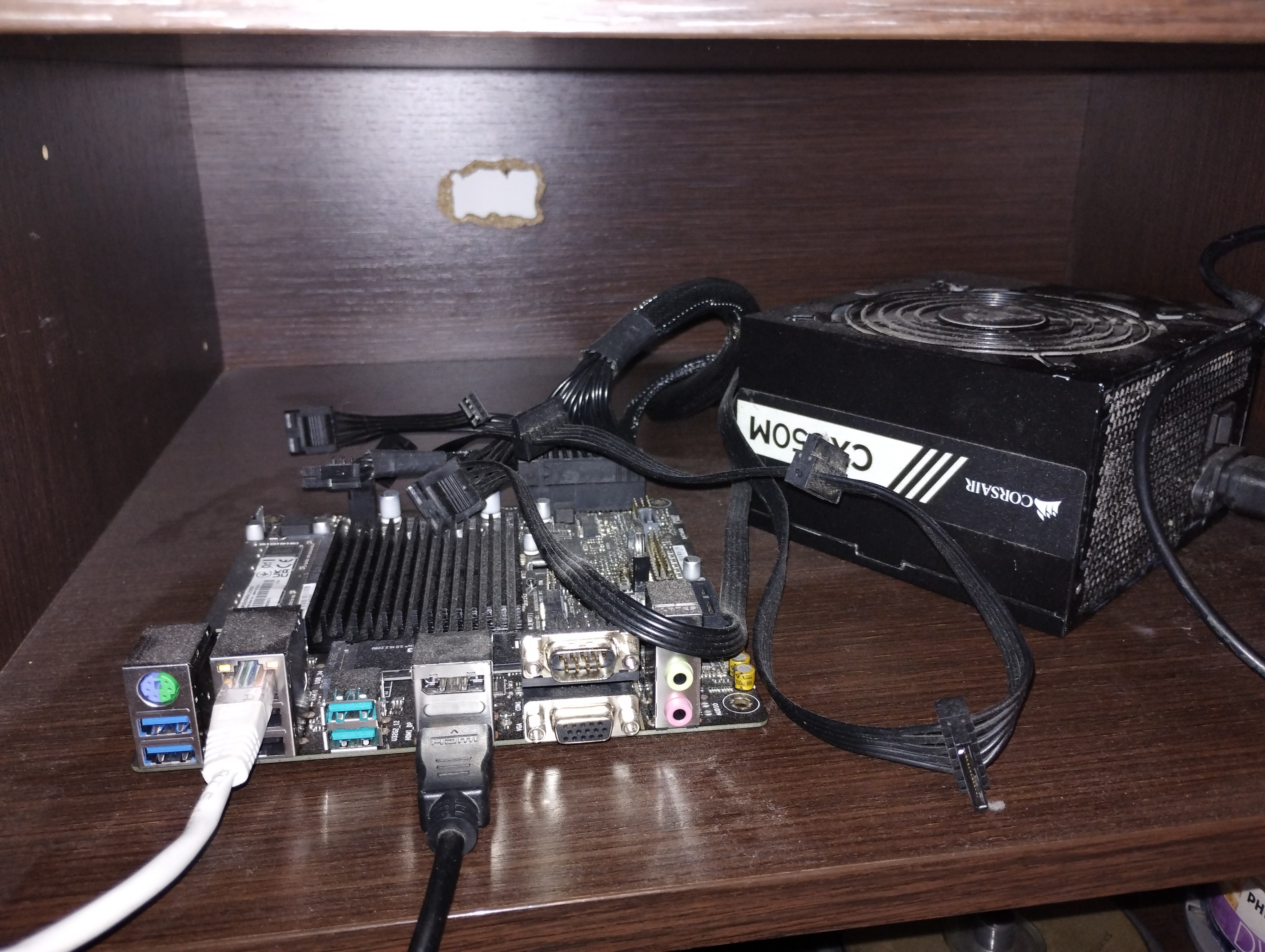

You just changed half my life.


You just changed half my life.



This is a custom built mini PC, with a mini-ITX motherboard and an Intel N100 CPU. It gets powered by a power supply that I got from an old computer. Also, it needs no active cooling, just a heatsink. It almost never gets above 60°C.
(and yes, it has no case).
In it I run:
I managed to fix this problem by pointing my domain name to my private IP address (with pihole’s local DNS entries), so I could access it. Then, I just got certs for the domain and applied them with nginx.
I know, but for some reason my router does not let me access my domain (with duckdns) when connected to my network. So even if I get certs for the domain, I will not be able to access it. I have set up local DNS entries (with Pi-Hole) to point to my srrver, but I don’t know if it possible to get certs for that, since it is not a real domain.
EDIT: Fixed it. (See reply for fix)
I installed Void Linux on my Raspberry Pi without looking at the details, and I was surprised that it had no systemd! It was the first non-systemd distro that I had encountered and also pretty fast.


Yes, basically on internal LAN I put admin admin to everything.


I don’t dual boot, I just have some other Windows machines that I use rarely for Windows-only software that require an external connection, like Odin for Samsung devices.


ext4 on everything except external drives where I put NTFS.
I just use ext4 on everything. It works pretty nicely.


I think you can encrypt drives by using a key stored in the TPM, if you have one. See the Arch wiki for info.
Though I have heard the TPM is not as secure..
I use root for the same things except for the battery management one.




I don’t have any job that needs to run 24/7, so I poweroff my server at night (12 am) and start it in the morning using WOL.


OK, maybe I will think about some other use for the Raspberry Pi then.


Maybe, but I my router is not hackable and I don’t plan on buying one that is.


While trying to set up the WLAN, I couldn’t connect to the AP, it said no internet access, and I couldn’t connect to the Pi, or ping any device from it.


Can you explain more the setup? What VMs would I need to run?


Thanks for responding. I actually don’t have Immich yet on the Raspberry Pi, so it’s the first time I will be installing it and then importing the photos. I don’t actually care a lot about the migration, since I can just reconfigure the services. I want to ensure that if a drive fails, I can restore the data. I would try RAID, but I read that “RAID is not backup”. Or I could just run the command you provided in a cronjob.


Booting directly from UKI signed by my Secure Boot keys.
Yes, this is it. I bought it because it was cheap (100€) and had a built-in CPU. The only problems are that it hasn’t got many SATA or PCIe ports. This is fine however, because I have no need for them right now.